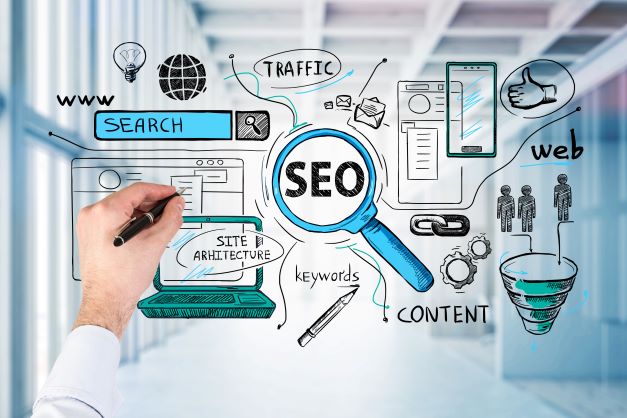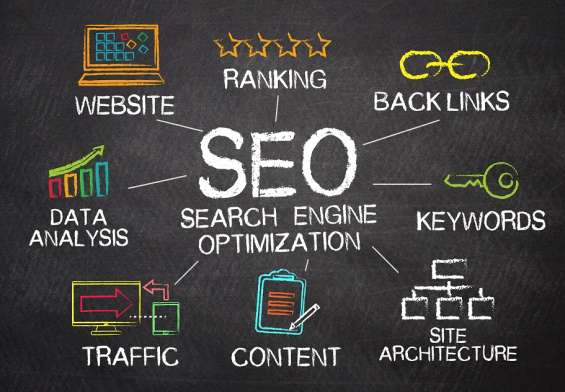On-Page SEO plays a huge role in today’s digital world, especially when it comes to effective online visibility. It involves optimizing individual web pages to rank higher and earn more relevant traffic from search engines. This article will talk about some of the key components of On-Page SEO, providing actionable insights to help you enhance your website’s performance.
Keyword Research for SEO
Thorough keyword research provides the foundation that On-Page SEO is built upon. There are many tools you can use to identify the right keywords such as Ahrefs, Ubersuggest, and Google Keyword Planner. Effective keyword research for SEO gives you an understanding of what terms your target audience is searching for, so you can create content that meets their needs.
It’s crucial to integrate keywords into your content strategically. Focus on placing keywords in high-impact places like titles, headings, and the body content. This approach makes sure search engines understand the topic of your page so it can be indexed accordingly.
Content Optimization
The most important element of On-Page SEO is high-quality, relevant content. Your content needs to be engaging, informative, and valuable to your readers. Include multimedia elements like images and videos to make your content more appealing and interactive.
User experience is an essential part of optimizing your content. Make sure it’s easy to read and well-structured. Use short paragraphs, bullet points, and subheadings to break up text and make it more digestible. Engaging content keeps visitors on your page longer and shows the search engines that your site provides valuable information.
HTML Elements
Proper On-Page SEO also requires optimizing your HTML elements. The title tag, also known as the meta title, is the most important of these elements. It shouldn’t be more than 60 characters and needs to contain your primary keyword. According to WordStream, “An optimal title tag is 60 characters or less and contains the keyword you’re targeting. Be sure to front-load the headline with the keyword to make sure it doesn’t get cut off on smaller screens.”
Meta descriptions are another important aspect. These snippets appear under your title in search results and should be between 155-160 characters. A well-crafted meta description can increase click-through rates by concisely conveying the benefit of clicking on your link.
Header tags (H1, H2, H3) structure your content and make it easier for readers and search engines to understand. Use only one H1 tag per page, which should contain your main keyword. Subsequent headings (H2, H3) should be used to organize your content into clear sections and sub-sections.
Image Optimization for SEO
Images play a massive role in On-Page SEO. Optimize images by using descriptive file names and alt text that includes relevant keywords. You should also compress images to reduce their file size, which will improve page load speeds.
Internal and External Links
Internal linking helps with site navigation and distributes page authority across your site. It helps search engines understand your website’s structure and your content’s hierarchy. Mangools highlights the importance of internal links: “Internal links are a great way to keep the reader on your site. They increase user interaction and bring added value by offering relevant resources or pages.”
Appropriate usage of external links can also enhance your content’s credibility. Linking to high-authority sites provides additional context and demonstrates that you’ve done your research. This practice can also help improve your site’s SEO as it shows search engines that your content is well-researched and trustworthy.
Site Architecture and Technical Aspects
A well-structured URL is another important component of On-Page SEO. URLs need to be concise and descriptive, as well as include your target keywords. A good URL structure helps search engines and users understand what the page is about before clicking on the link.
Since many people browse the web on their phones, mobile responsiveness is especially important in today’s digital landscape. Ensure the mobile friendliness of your site, as a significant portion of web traffic comes from mobile devices. Google uses mobile-first indexing, meaning it mainly uses the mobile version of the content for indexing and ranking.
Page speed is another important ranking factor. Users probably won’t stay on a page that loads slowly, leading to higher bounce rates. Use tools like Google PageSpeed Insights to test and improve your site’s loading times. Mangools emphasizes the importance of page speed: “Page speed is a ranking factor, and the reason is clear. In this fast era, nobody is willing to wait for information from a site if there are other faster options.”
Leveraging On-Page SEO Techniques
On-Page SEO is a multi-element discipline that requires continuous effort and adaptation. By focusing on keyword research, content optimization, HTML elements, image optimization, internal and external linking, and technical aspects, you can significantly improve your website’s visibility and how it performs in search engine results. Remember, On-Page SEO is not a one-time task but an ongoing process that changes along with search engine algorithms and user behavior. Stay on top of the latest SEO strategies to keep your site competitive.





